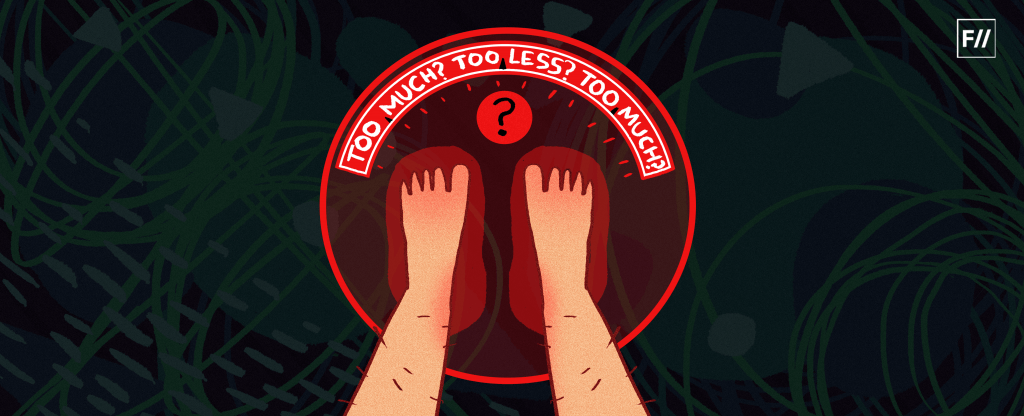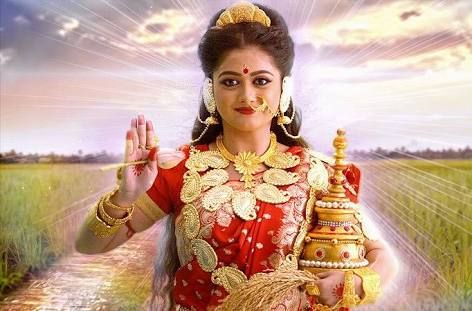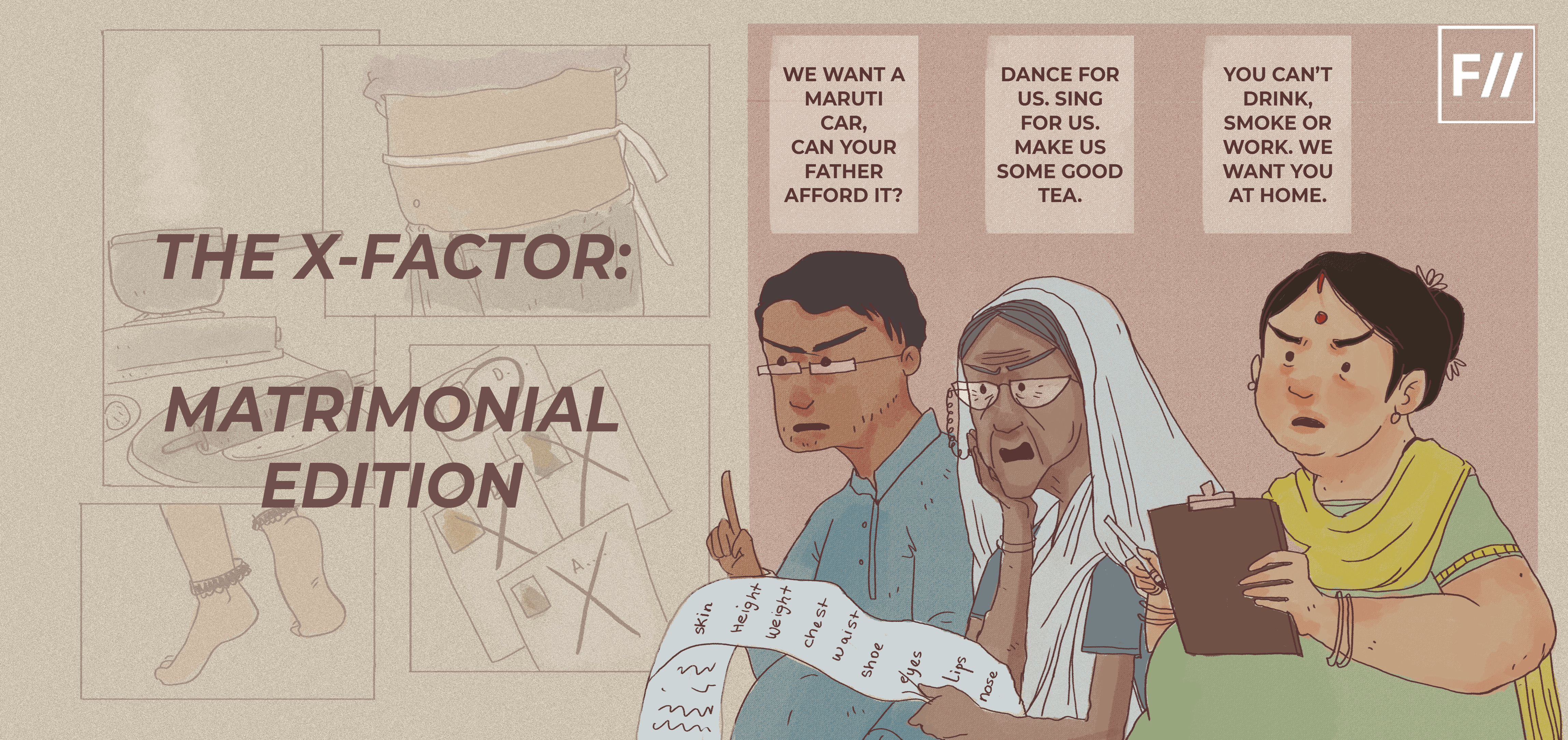Editor’s Note: This month, that is July 2020, FII’s #MoodOfTheMonth is Feminism And Body Image, where we invite various articles about the diverse range of experiences which we often confront, with respect to our bodies in private or public spaces, or both. If you’d like to share your article, email us at pragya@feminisminindia.com.
“Oh, how pretty you are with those sharp, symmetrical features. Only if you were a little slim, I would have married my son to you.”
And then she went on about the repercussions of being overweight, which included the part about the difficulties at conceiving a child. The old lady had met me at my sister’s office party, and she related her thoughts to me at a gathering of a few hundred people.

I grew up a fat kid, at least for the part I remember, and was never sorry about how I look. I was an active teenager who played lawn tennis in the mornings and religiously went to the evening swimming lessons. I am a trained Kathak dancer and an average singer. Oh, and I am a research scholar and was always in the top 5 of my class—but I was always fat. I never shed a kilo, and it never bothered me. As a teenager, my sense of identity was directly proportional to the male attention I was getting and the number of proposals that came my way, and let’s just say that I was doing all-right in that area of my life. Just as all fairy tales end one day, so did mine, and I was now assessed according to the matrimony market.
Hindu culture is used to the wedding images of Lakshmi. A fair, beautiful girl with intricately defined features, a slim waist, long hair and an always smiling face. She is the ideal bride dressed in a red saree and adorned with gold jewellery. The image of the goddess is so strongly etched in the minds of Hindu parents that all the exceptions are scorned at.
Turning 28 and still single—I am a fat, broad, dusky, ‘over-educated’ girl. It was enough for my family to fret and whisper the benefits of yoga in my ear. I never experienced an identity crisis until I was introduced to this circus of arranged marriage. The psychological toll of the entire process is so taxing that I have nightmares about the tyre that sits around my waist, which would be visible under my lehenga. The fact that my double chin will gain a life of its own under the harsh flash lights and the whitening makeup, keeps me up at night. I am even bothered about sitting cross-legged at the mandap, if my thick thighs would remain folded for hours together without dozing off.
Also read: The Ugly Truth Of Bride Trafficking And Agrarian Labour In Haryana
The pressure that comes with the idea of constructing a profile on Shaadi.com gives me chills; I am not the sanskari bahu neither am I a biker gal—I am just somewhere in between. The fact that eyes will judge my weight before they can ever know me, stops me from pursuing a path of searching for a companion. We live in a society where wedding is more important than the marriage, and it is the vanity of the ritual that questions the way I look at myself in the mirror.

Hindu culture is used to the wedding images of Lakshmi. A fair, beautiful girl with intricately defined features, a slim waist, long hair and an always smiling face. She is the ideal bride dressed in a red saree and adorned with gold jewellery. The image of the goddess is so strongly etched in the minds of Hindu parents that all the exceptions are scorned at. Hindu Mythology has constructed this image very carefully; while the shy, fair, slim bride is hailed as the goddess, the fat, dark, hairy woman is the demoness (rakshasi).
The re-run of Ramayana and Mahabharata during lockdown re-asserted the dichotomy. Surpanakha was shown as a giantess—a woman with uneven teeth, dark complexion, broad gait, facial hair and a crooked smile, while Sita was the beautiful, fair, slim and calm wife. Before daring to propose Rama, Surpanakha changed her appearance and transformed herself into a socially acceptable binary. She looked like Sita and also gave up all her mayavi powers before she approached Rama.
This transformation is what society expects of every Indian girl.
The process of ‘becoming a bride’ includes impractical diet plans, relentless beauty sessions and serious changes in the routine. Indian girls have graduated from the haldi ubtan to derma peels and chemical injections that make them fairer. The two months keto diets, six months of no wheat and rice diets, the perpetual starvation—are all to appear doll-like on the day of the wedding, and also to be accepted by the groom’s family.

Acceptance and validation have guided women’s lives for so long, and in the appearance-driven society, she is reduced to a spectacle. Girls get laser surgeries done to get rid of their facial hair, a procedure that if not done by trained medical practitioners might affect their skin forever. Make up artists are hired and rooms booked only to look a certain way. All this cosmetic vanity to be validated as the ‘ghar ki lakshmi.’
The process of ‘becoming a bride’ includes impractical diet plans, relentless beauty sessions and serious changes in the routine. Indian girls have graduated from the haldi ubtan to derma peels and chemical injections that make them fairer. The two months keto diets, six months of no wheat and rice diets, the perpetual starvation—are all to appear doll-like on the day of the wedding, and also to be accepted by the groom’s family.
My body identity stumbled at the dawn of my marriage-appropriate age. Indian girls still marry to comfortable salaries rather than intellectual companions and subject themselves to the toil of becoming the binary of a hefty wallet, a delicate virgin bride. With the times changing and feminism deepening in the roots of society, struggles of women working and transgressing their kitchens has become common, but even the emancipated few fall in the traps of a ‘special day’.
Can’t weddings be a celebration of marriage, the commencement of something special rather than a vulgar display of wealth and vanity?
Also read: It’s Time For The Argumentative Bride
Indian weddings need to be a private affair, without the grooms entering on the back of horses and brides descending from lotus flowers and impractical decorations. They need not be the replication of Bollywood movies, because our lives are not. Brides don’t need to look like the catalogue Sabyasachi brides, or like the actresses. Brides need to be celebrated rather than judged. Families should look for compatible couples, and not appearance appropriate sundar jodi. For, not every baraat can be Shiv ji ki baraat, and not every bride needs to look like Lakshmi.
When wedding becomes an industry, bride becomes a commodity.
Featured Image Source: Feminism In India
About the author(s)
Dr. Guni Vats is an Assistant Professor at the Department of English, Manav Rachna International Institute of Research and Studies. A PhD in Gender Studies, she is a renowned researcher, writer, and scholar.





